No. 31
Keep crooks out
Small security upgrades are a huge deterrent
Most burglars aren’t criminal masterminds seeking professional challenges; they just want to steal stuff with minimal time, effort and risk. Unfortunately, there are lots of easy targets in any neighborhood. But that’s good news for you. If you make your home just a little harder to get into, you greatly increase the odds that crooks will bypass your house and look for an easier job.
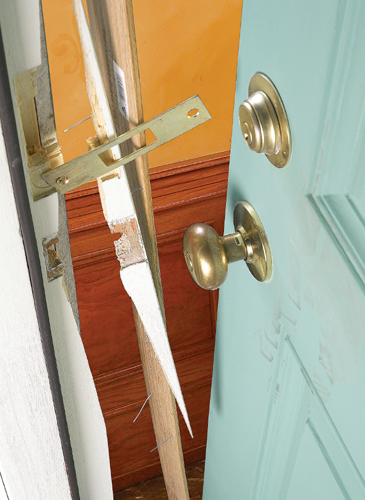
Focus on windows and doors
All the usual security advice (install exterior lighting, ask the neighbors to watch your house, etc.) is worth following. But above all, know this: The vast majority of break-ins occur through ground-level windows and doors. So strengthening them is priority one.
Daytime is crime time
Most of us think of burglary as a nocturnal activity. That used to be true. But these days, most burglaries occur between 10 a.m. and 5 p.m. In many cases, the crooks get in through unlocked doors or windows.
What about window bars?
They’re almost impossible to get past, so bars are the toughest type of window security. But before you install them, ask the local police if they’re necessary. In many areas, crooks avoid breaking glass. It makes a racket and is dangerous to the thief. As one cop put it, “When we find broken glass, we usually find drops of burglar blood.”
Reinforce a door
Burglars don’t usually pick locks. That takes too long. Instead, they kick or pry the door open. The dead bolt usually survives that brute force, but the door or strike plate gives way. Here’s how to beef up those weak spots:
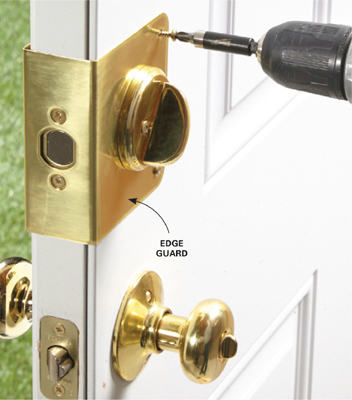
Strengthen the door
When kicked or pried, doors often split. Even steel doors are surprisingly easy to split. To prevent that, install an edge guard (available at home centers). Just remove the dead bolt, slip the guard over the door, screw it on and reinstall the dead bolt. Larger models back up both the dead bolt and the doorknob.
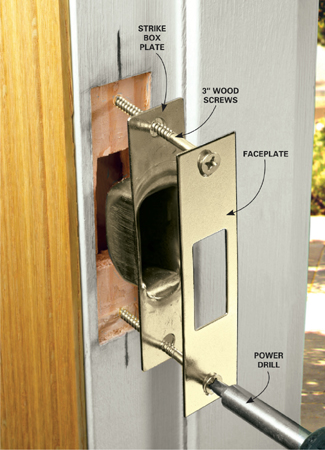
Strengthen the strike plate
A bigger strike plate is better than a small one, but the key factor is the strike plate’s screws. It’s critical that they penetrate not only the doorjamb, but also sink deep into the wall framing behind the jamb. To check, just remove one of the screws. If it’s less than 3 in. long, replace the screws. For even better protection, install a larger strike plate that allows for more than two screws.
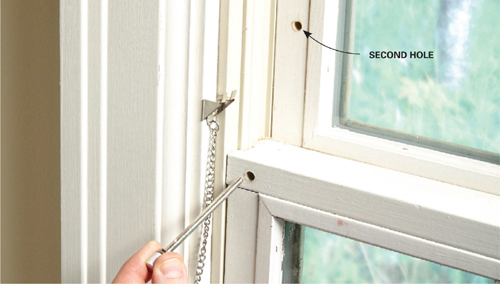
Secure windows
The latches on most double-hung windows are no match for a burglar with a pry bar. But cheap pin locks are much tougher. To install one, all you have to do is drill a hole. If you want to lock the window in a partially open position, drill a second hole. Most crank-open “casement” windows are a little harder to pry open, but it’s a good idea to add locks to them, too. You’ll find special casement locks and latches online.
Protect patio doors
There are two easy ways for burglars to get past a sliding patio door. Sometimes, they pry open the door; many patio door latches are wimpy. In other cases, they pry the door upward, lifting it off its track, and simply remove the door. Here are defenses against both attacks:
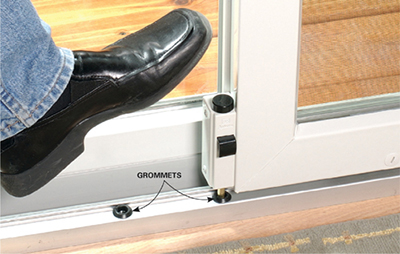
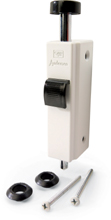
Add a lock or bar
At home centers and online, you’ll find various locks for patio doors. Some, like this one, allow you to lock the door partially open for ventilation. There are also bars available that jam against the door and prevent opening from outside. Some people simply lay a board or broom handle in the lower track to prevent opening. That’s OK, but a crook can slip a coat hanger through the door’s weather stripping and push the broom handle out of place.
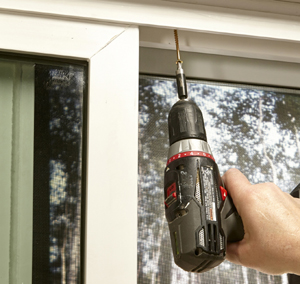
Keep the door down
To prevent the door from being lifted off the lower track, just drive two 3-in.-long screws through the top track. Leave them protruding so the door can slide, but can’t be raised. This trick also works on many types of sliding windows.
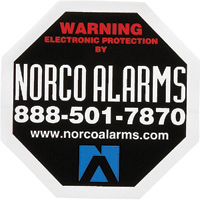
Do alarm systems work?
Yes, all the experts agree that most crooks shy away from homes with security systems. But you have to advertise; if thieves don’t know you have a system, they won’t be deterred. Post the yard sign and windows stickers where they can’t be overlooked.
If they do get in…
• Immediately notify credit bureaus, your bank and credit card companies.
• Inspect your checkbook. If any checks are missing, close the account.
• Make your home more secure. Crooks often come back about six weeks later to steal the new stuff you bought with the insurance payout.
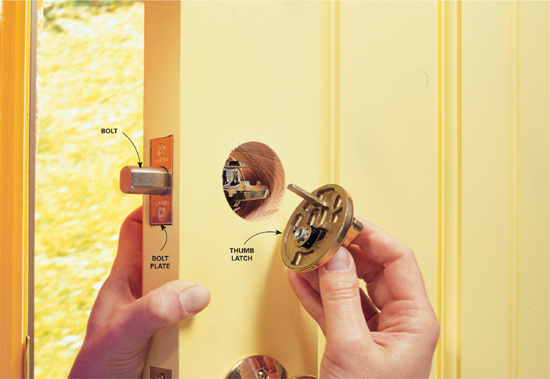
Don’t live with a broken dead bolt
A dead bolt is the key component of door security. The doorknob latch is no substitute. So if your dead bolt no longer works, replace it now. It’s a surprisingly easy job. Just remove two screws in the thumb latch, then remove two screws to remove the bolt. Install the new dead bolt the same way. Try to find a new dead bolt with a bolt plate of the same size. Otherwise, you’ll have to either enlarge the recess in the door or live with an ugly gap around the plate.
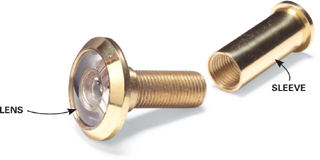
Install a peephole
Never open the door unless you know who’s on the other side. Whether that door is wood, steel, fiberglass or composite, installing a peephole is easy.
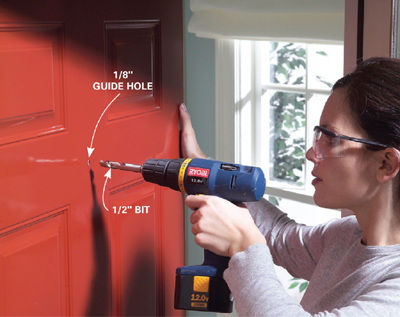
1. Drill the hole
Drill a small (1/8-in.) guide hole through the door. Then drill the full-size hole (typically 1/2 in.). Stop about halfway through and then drill from the other side.
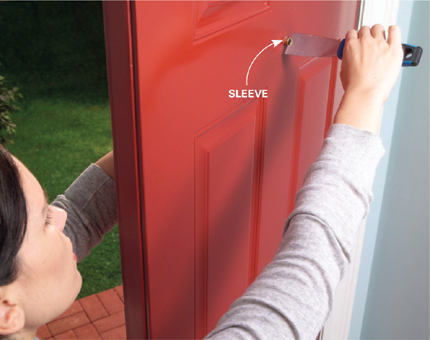
2. Install the peephole
Screw the lens and sleeve together. There are notches in the sleeve, so you can tighten it with a stiff putty knife.











